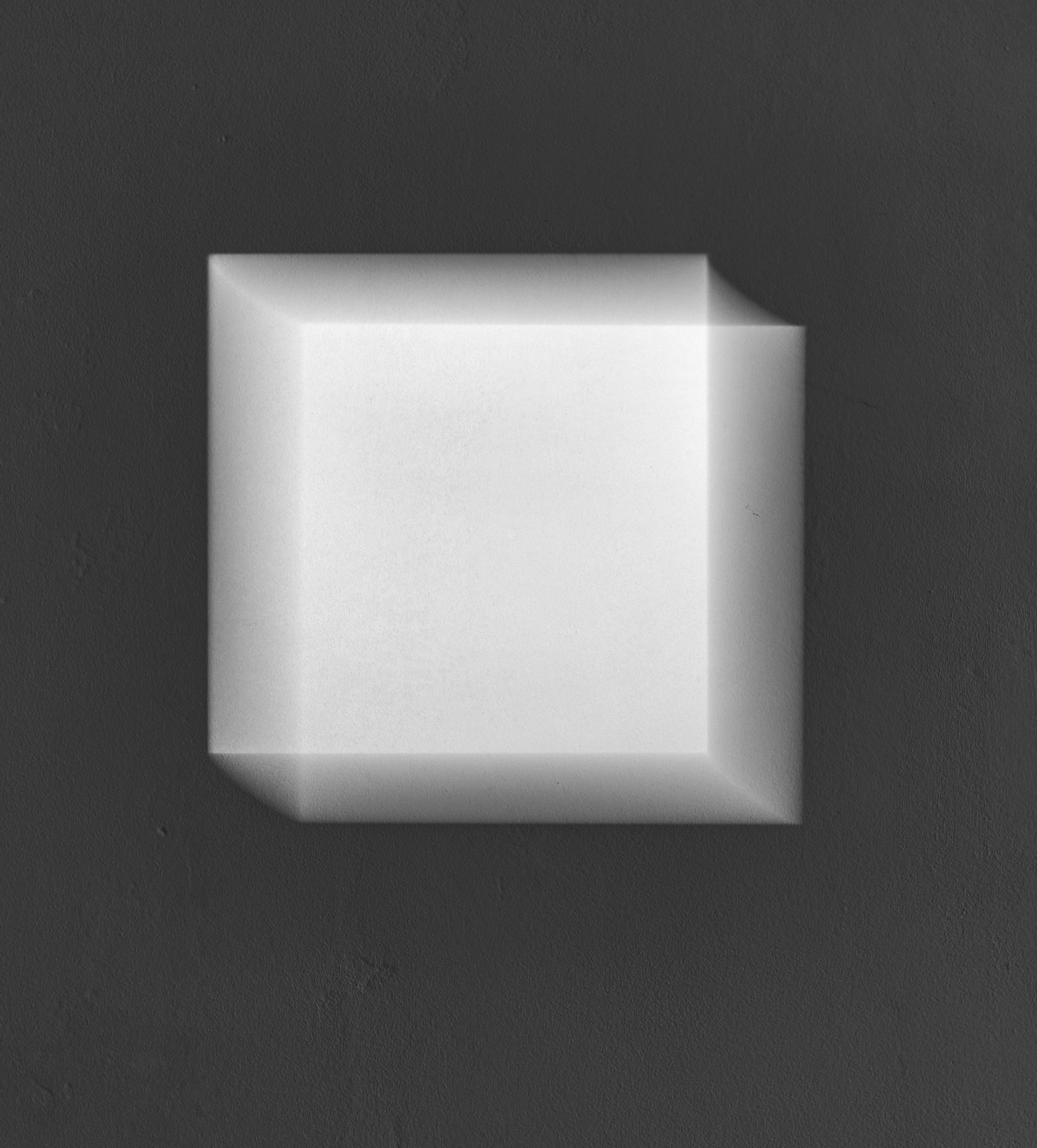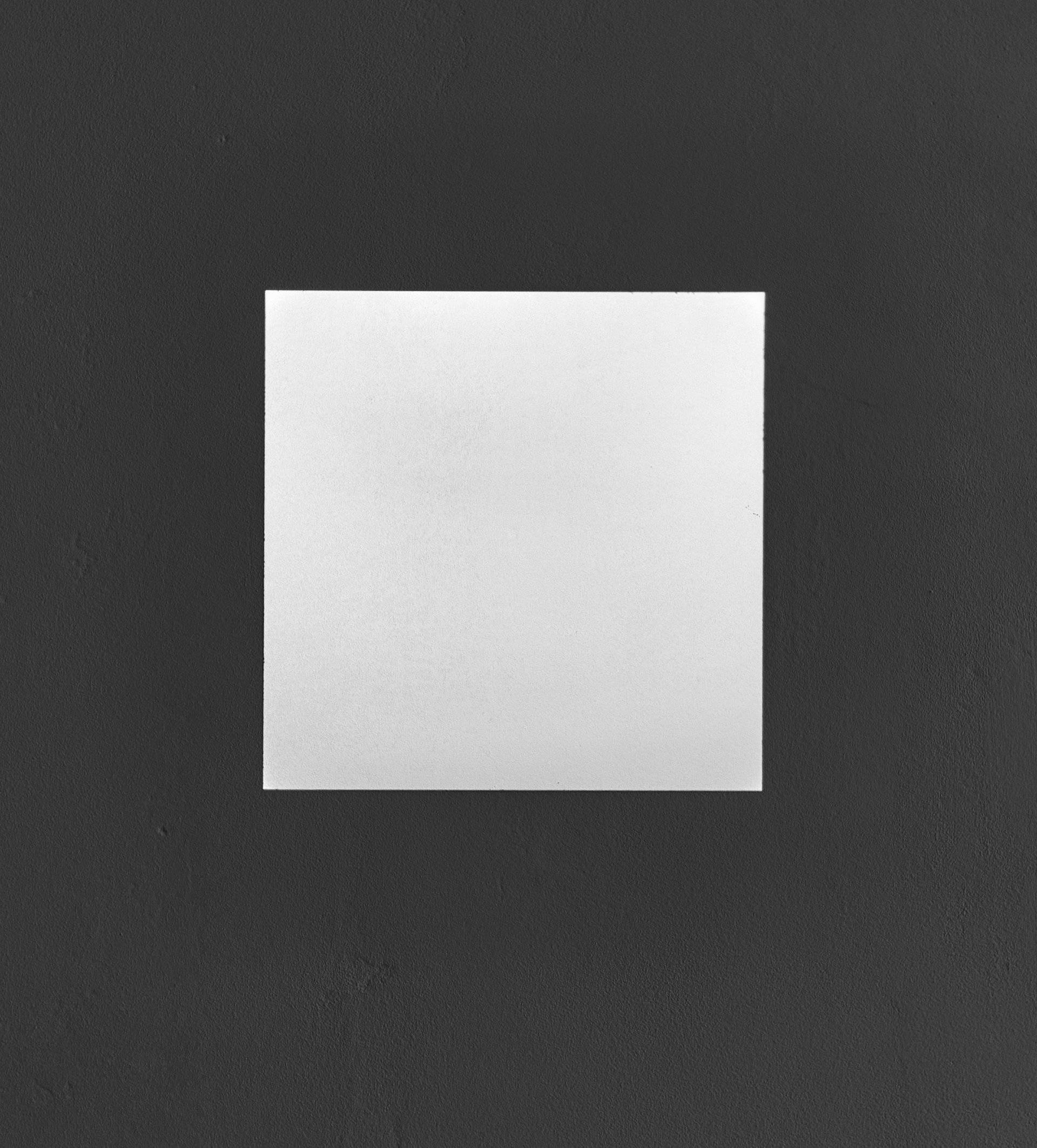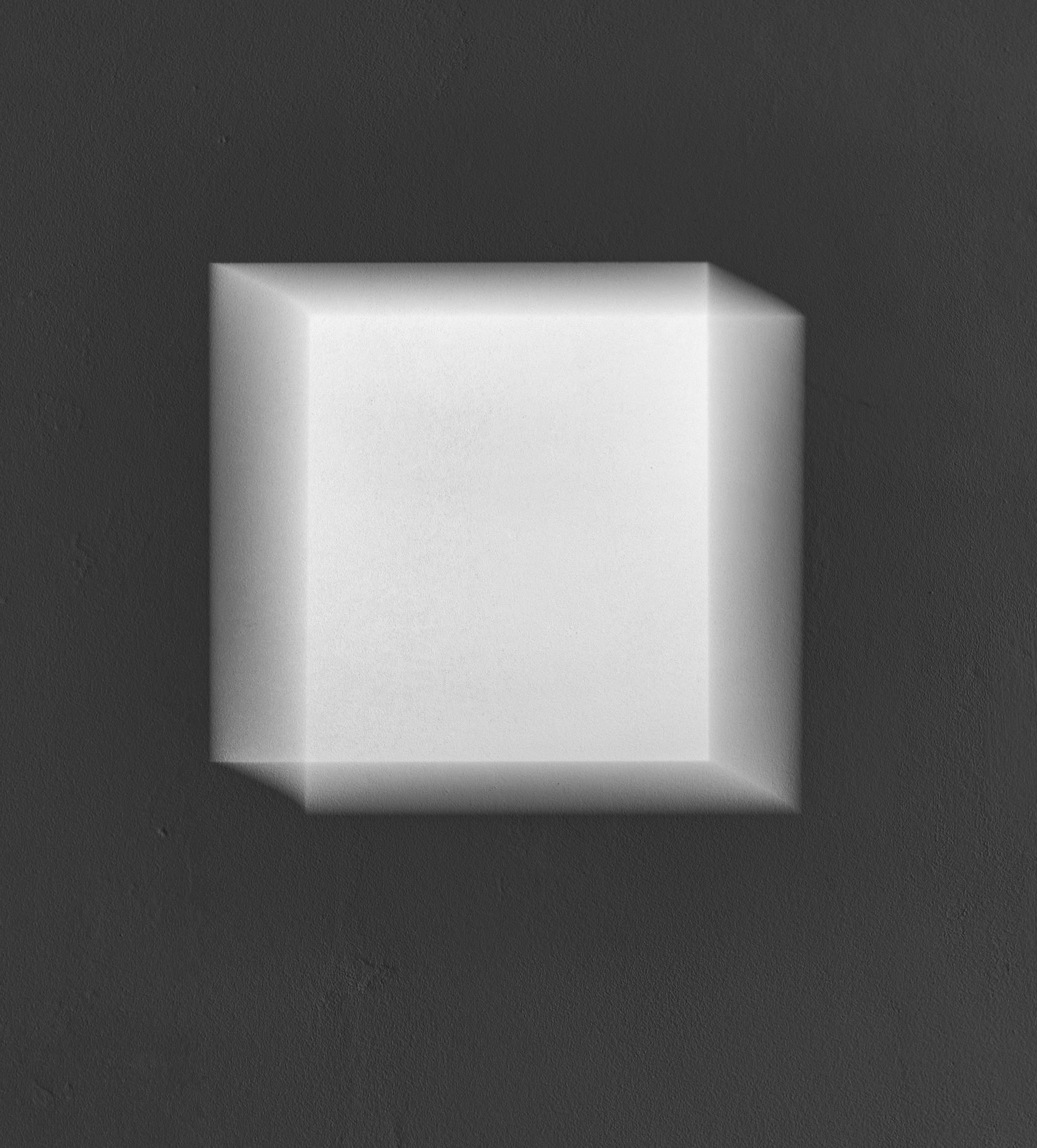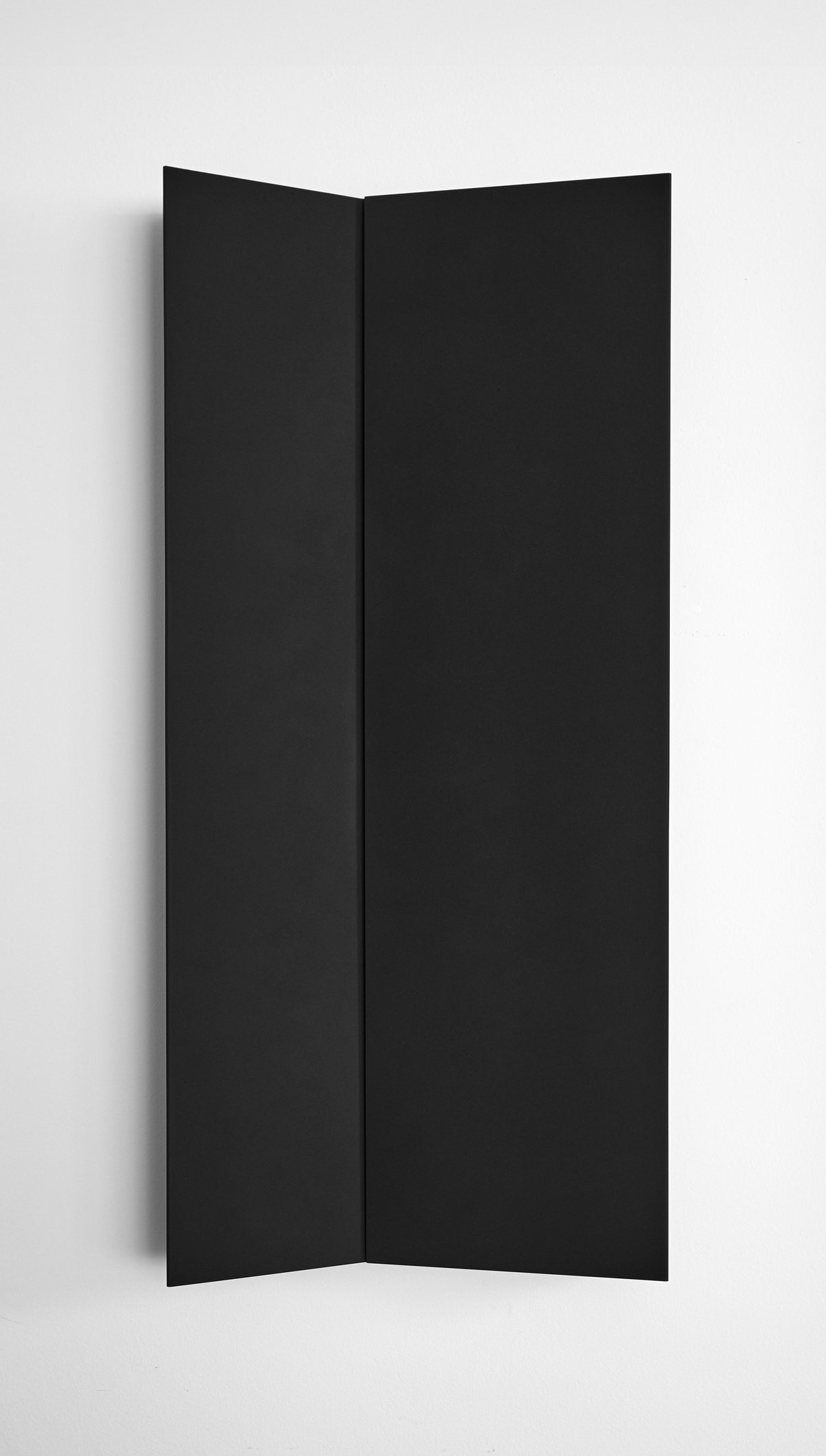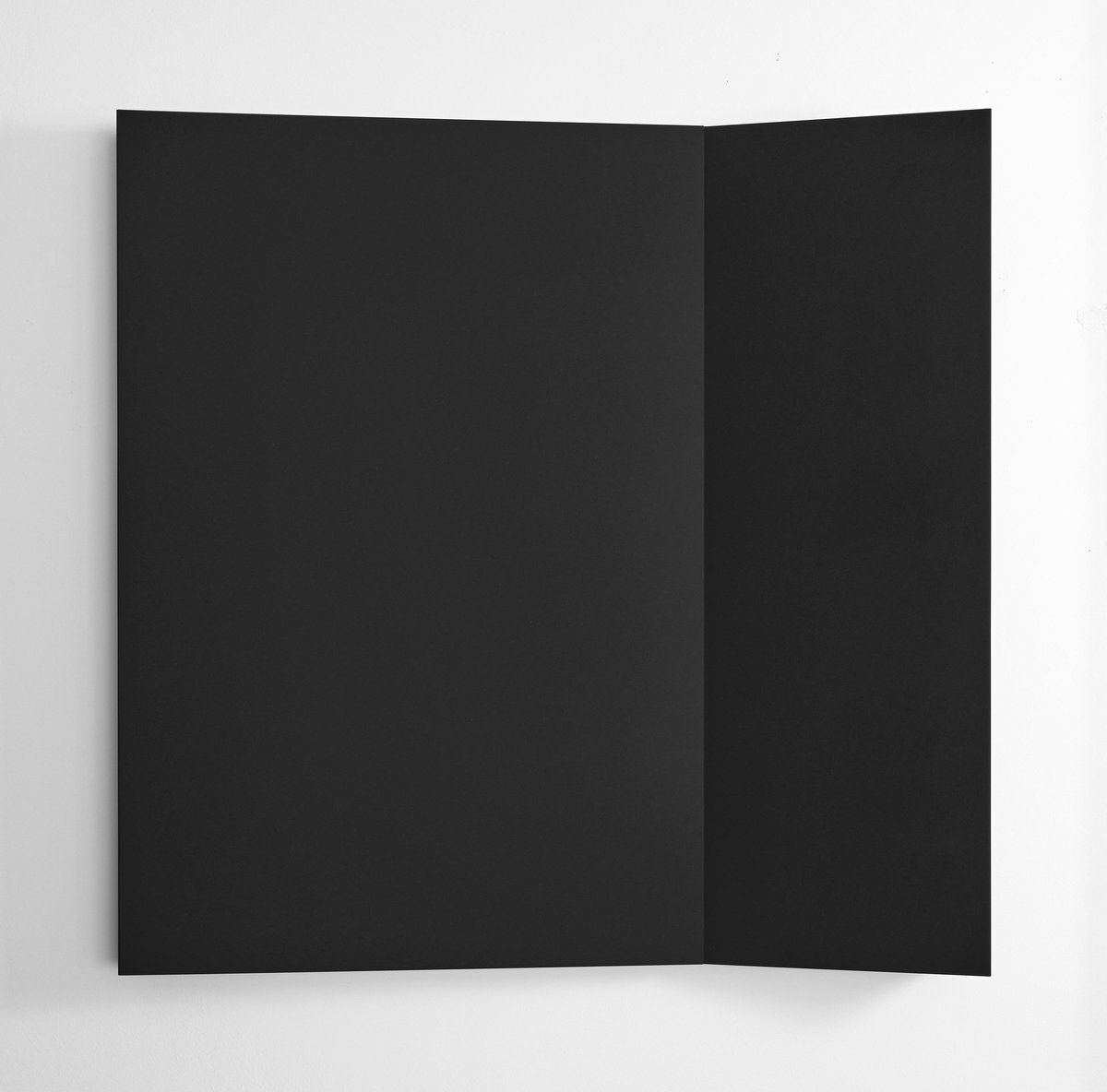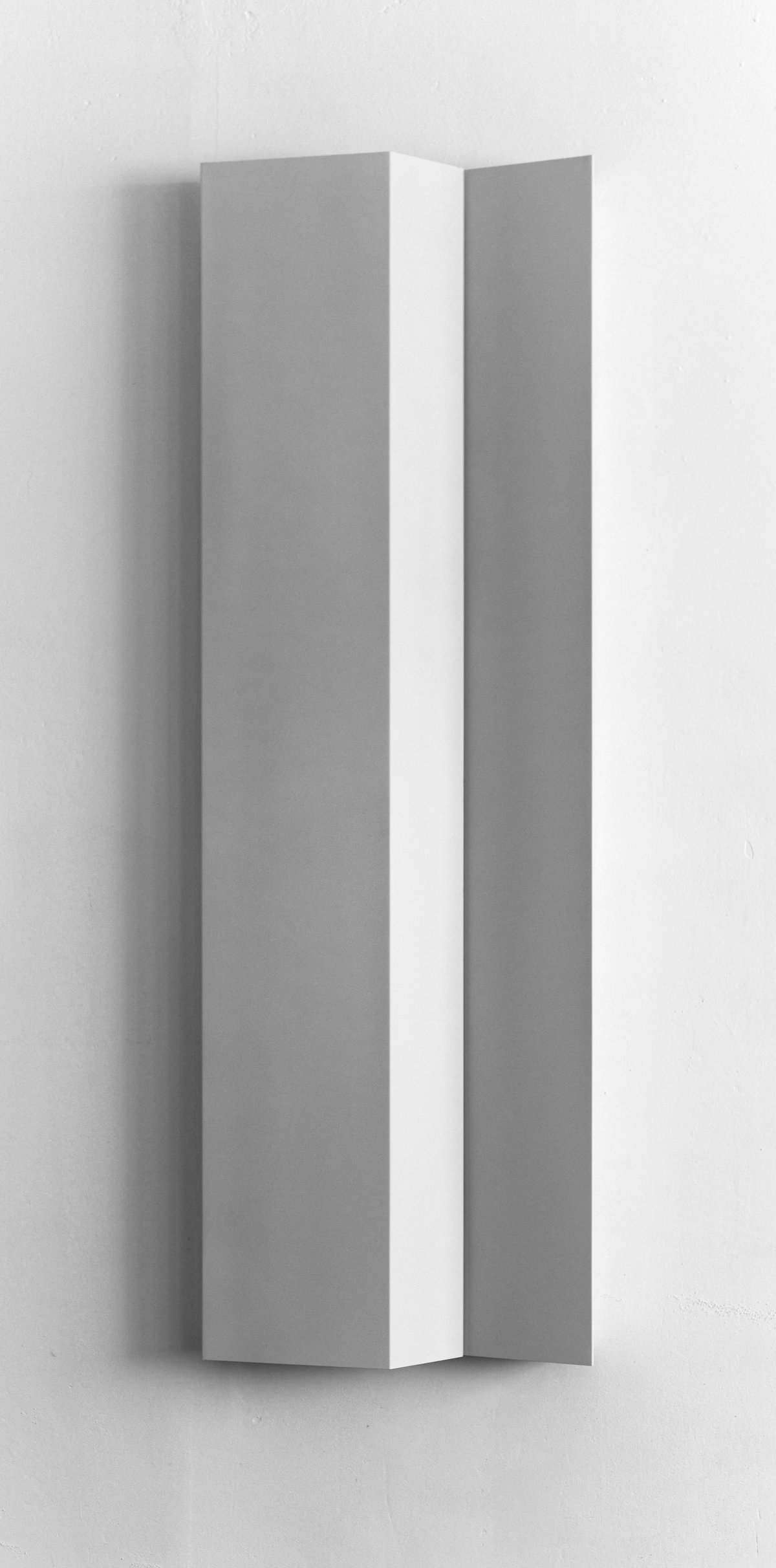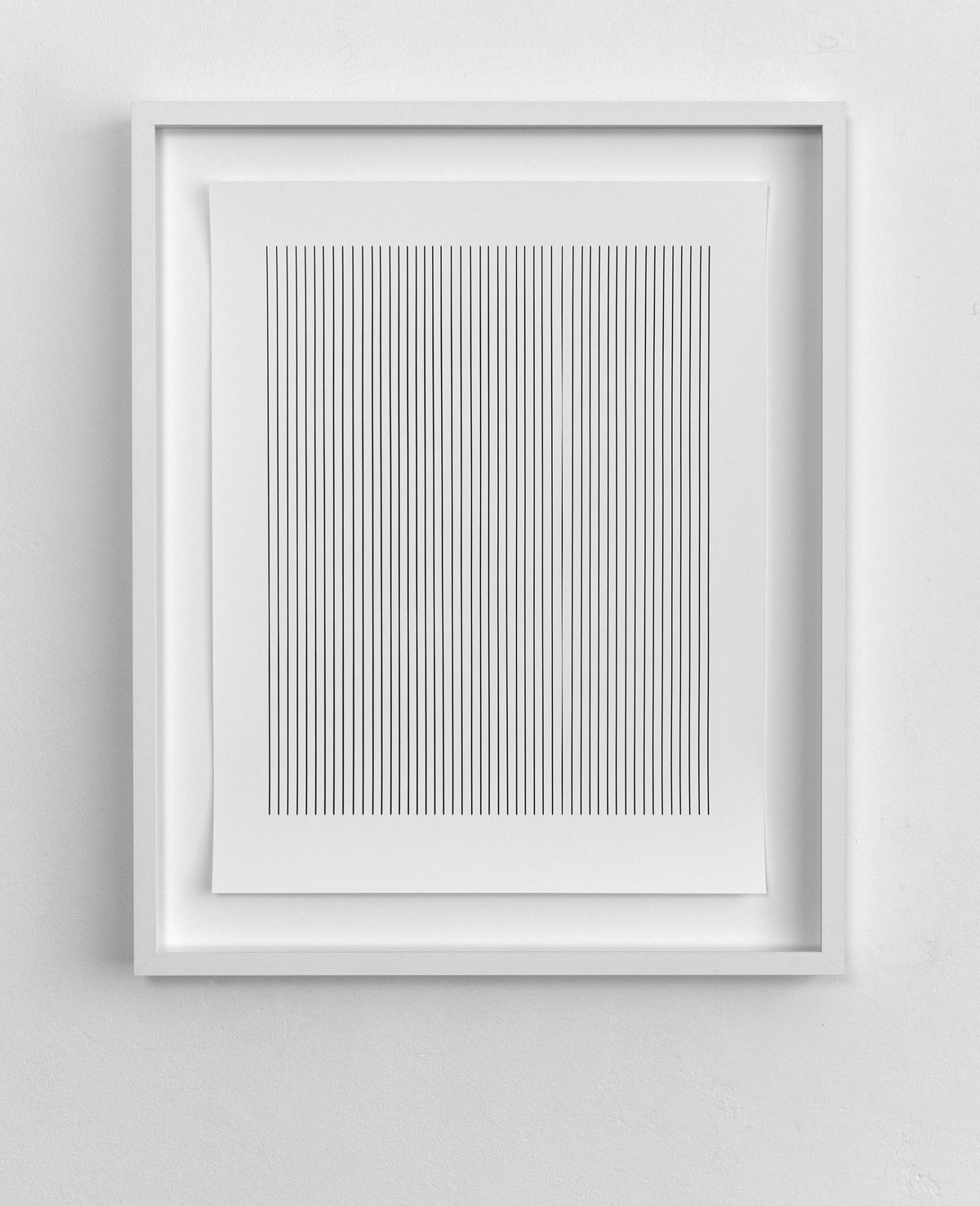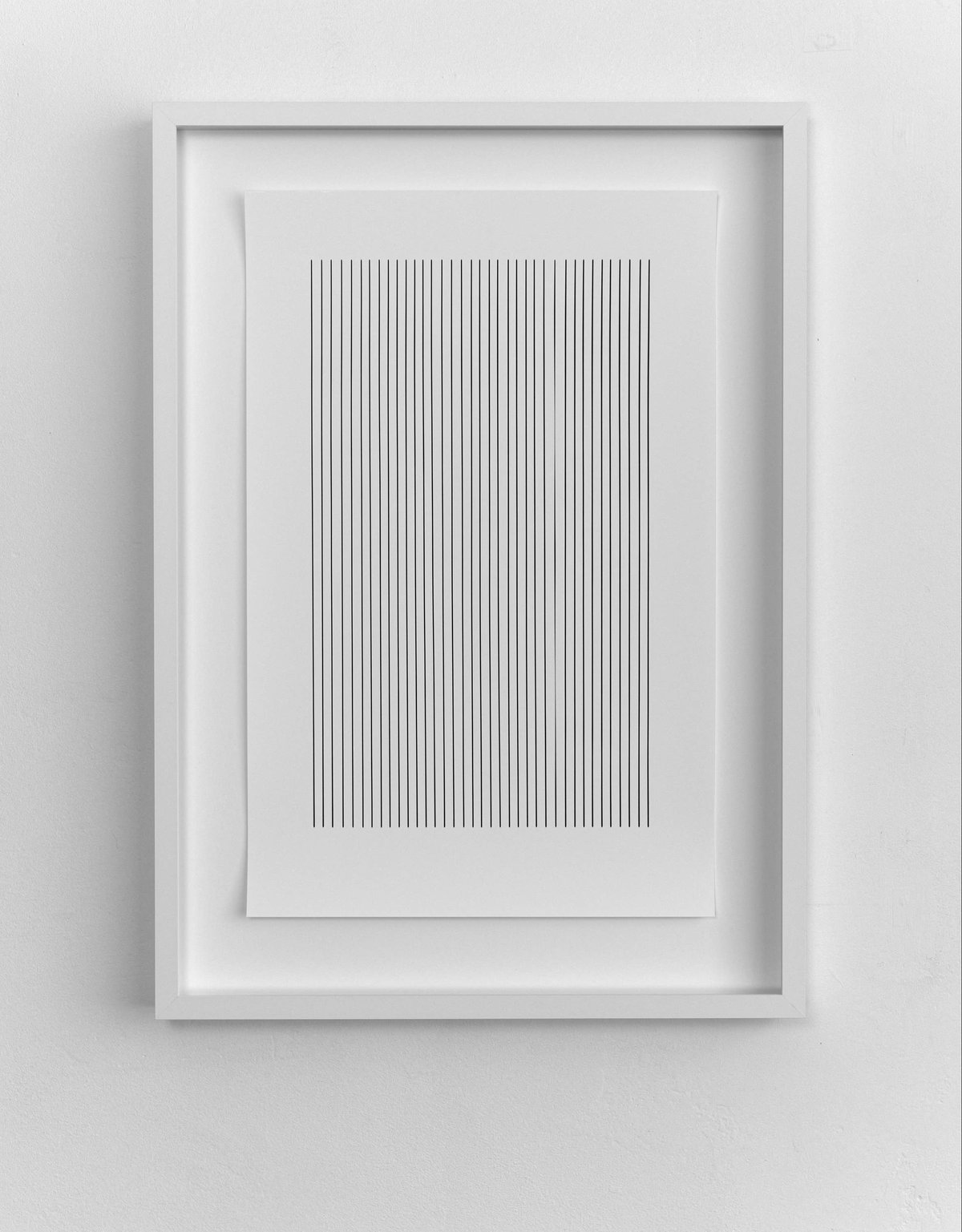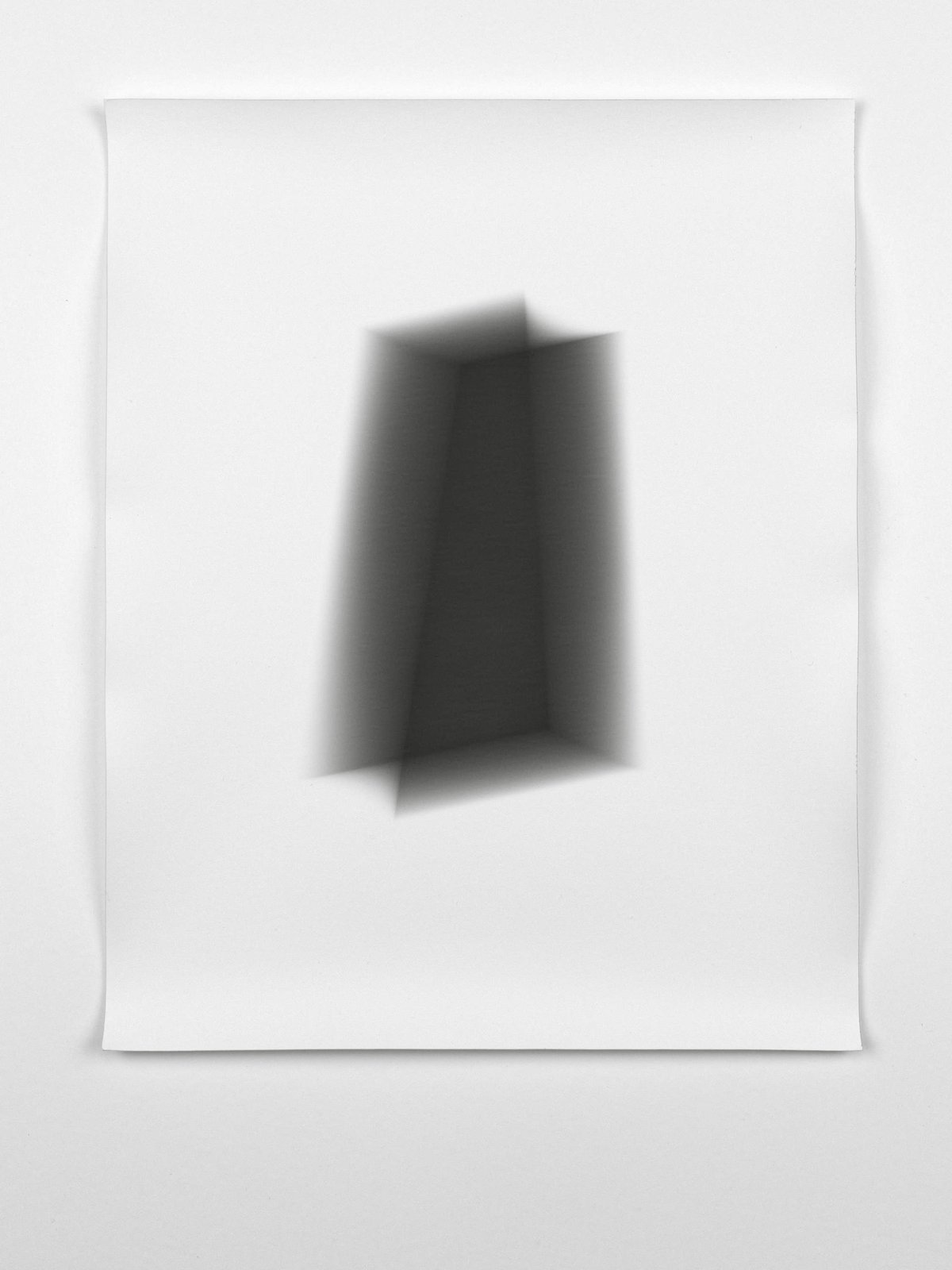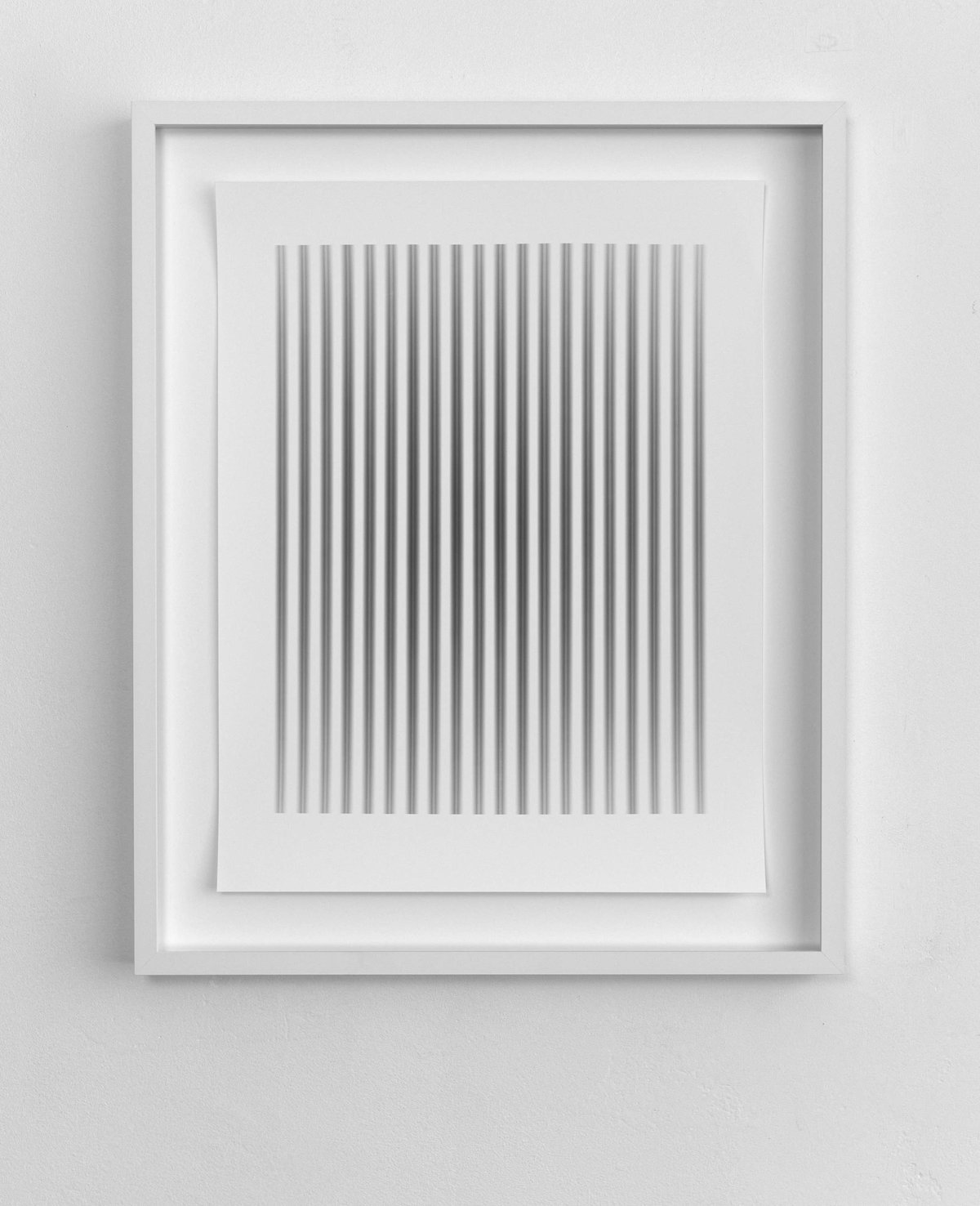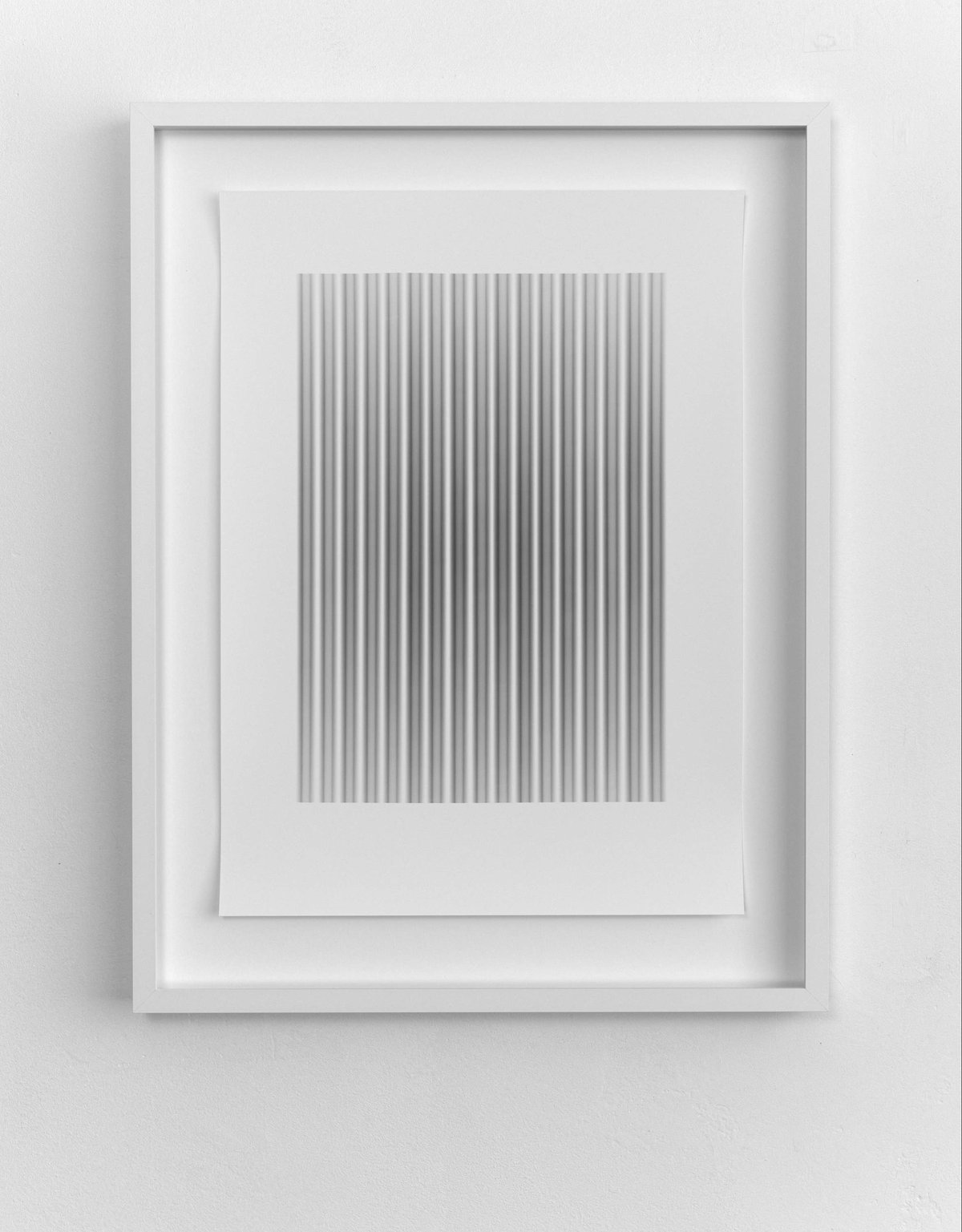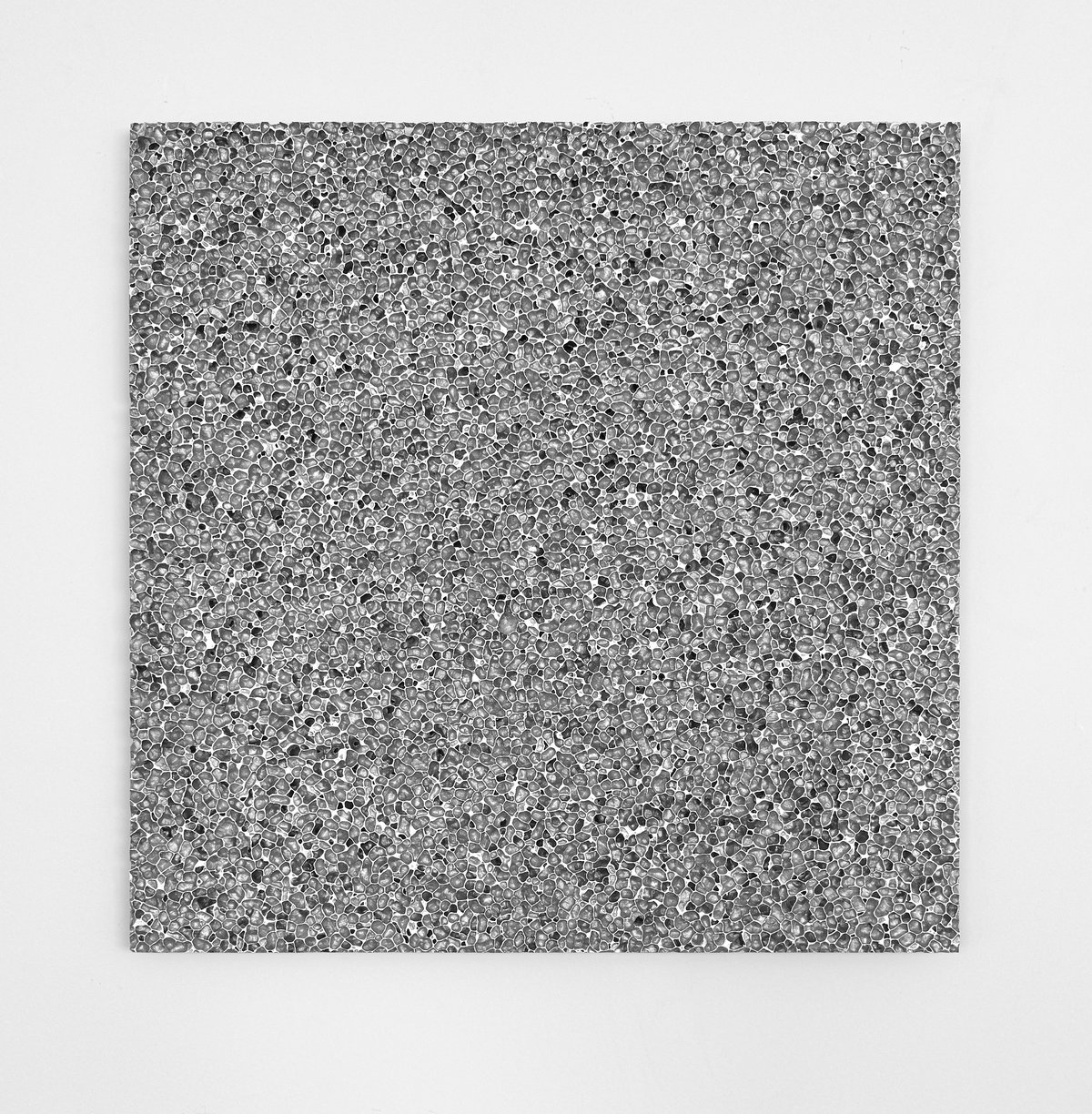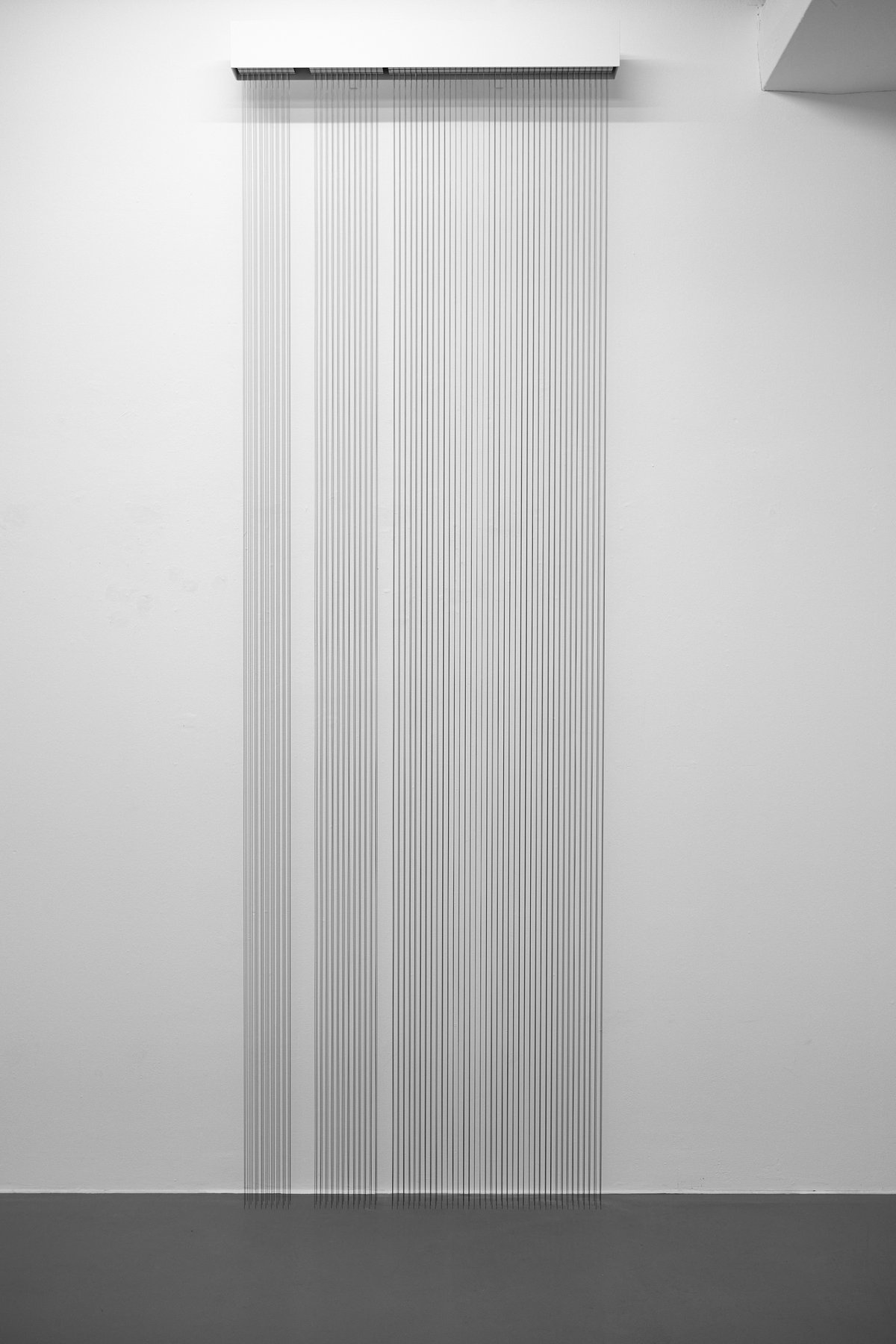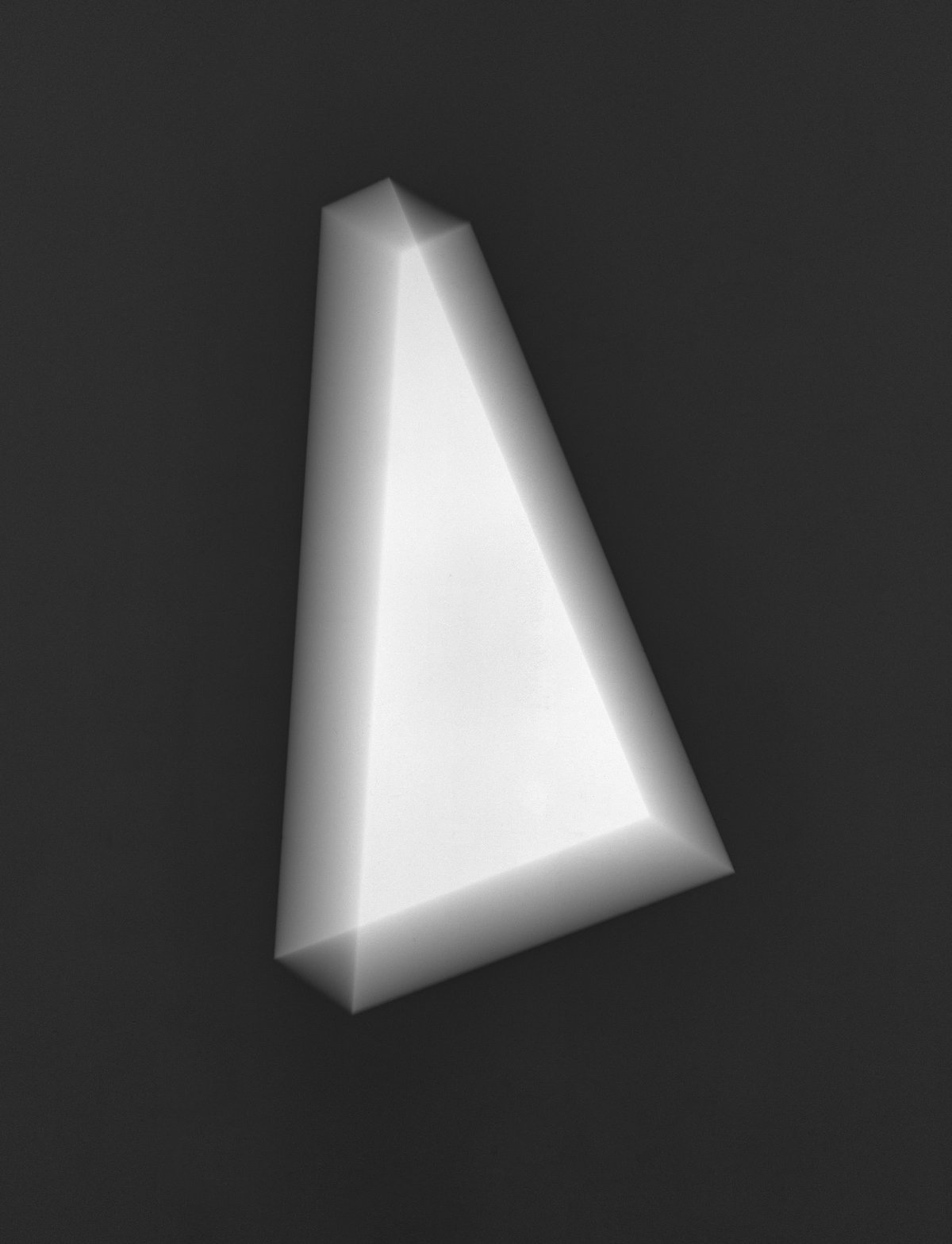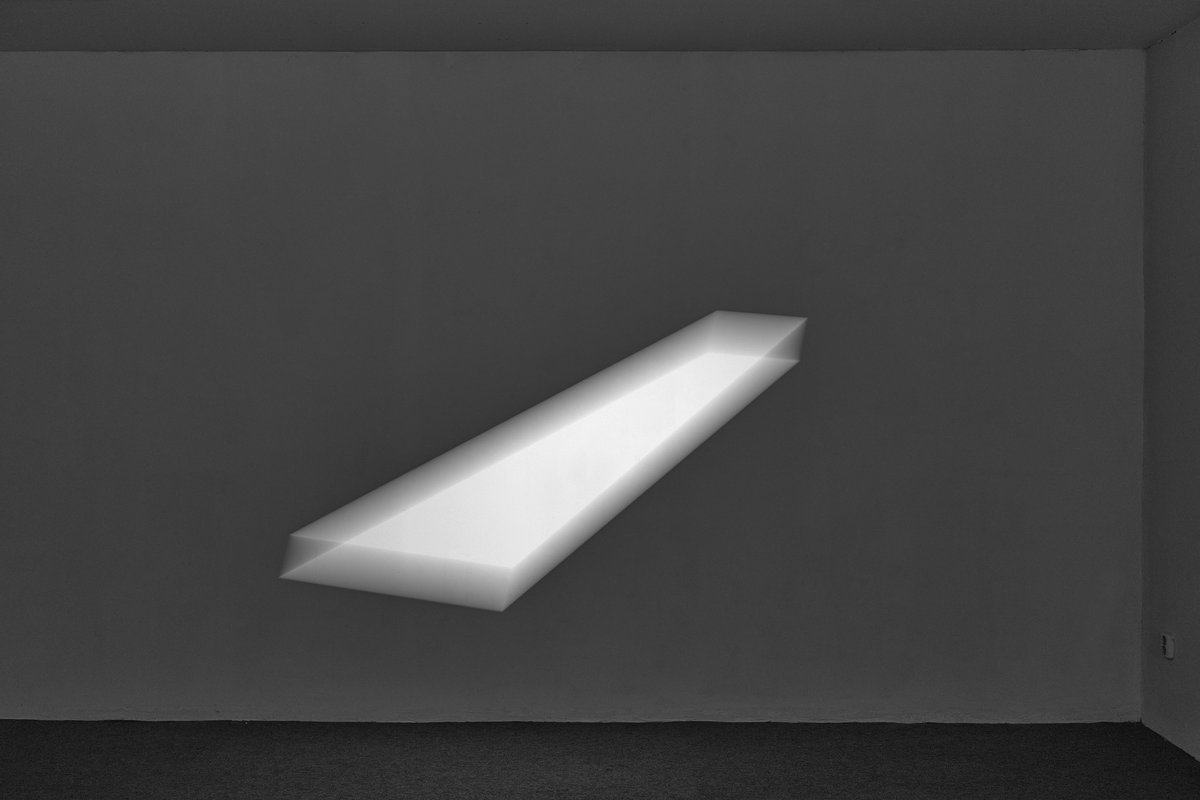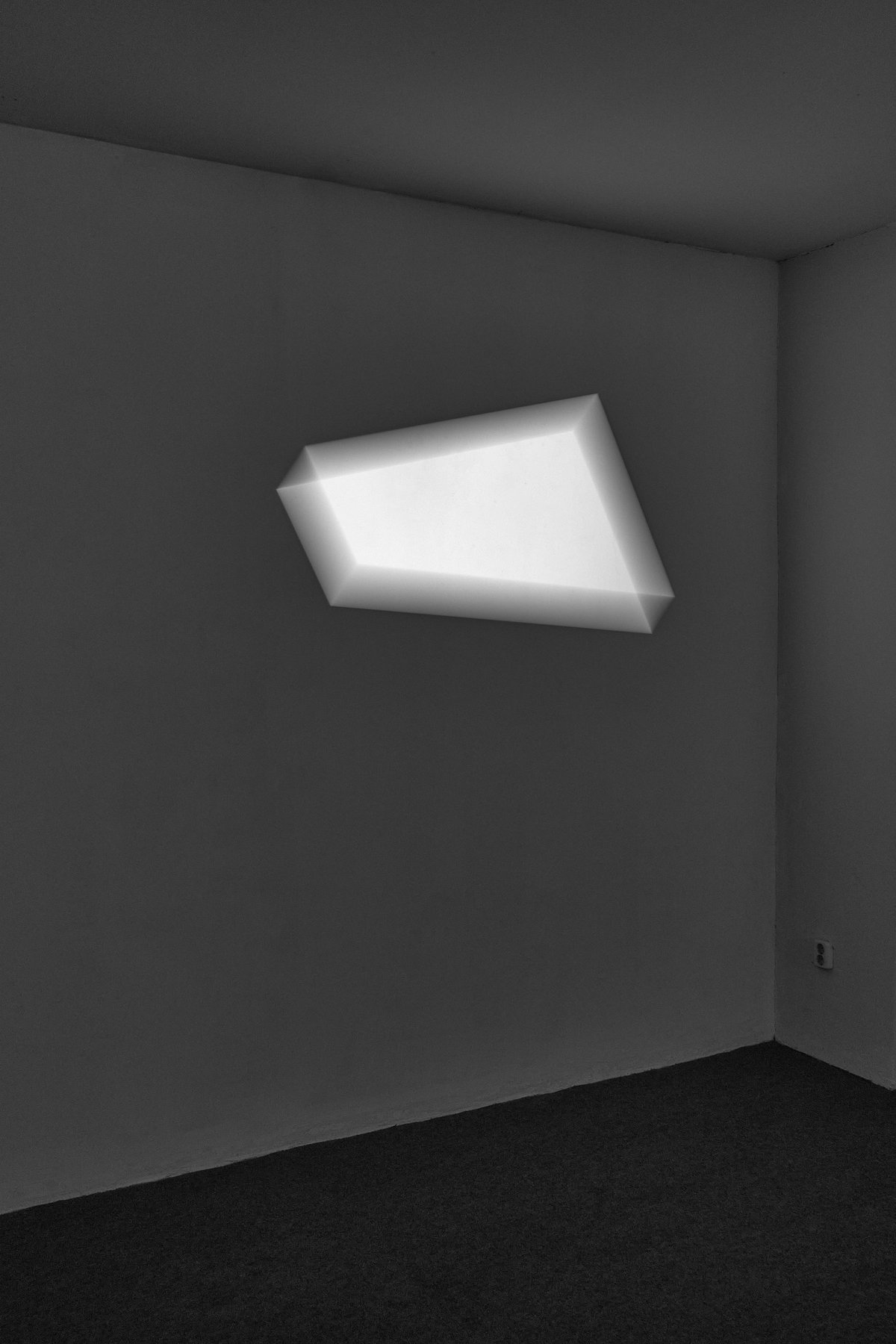between seeing and hearing
visible, not audible sound, imagined space, planes made of lines, animated light – the artist julius stahl has developed a very particular repertoire and a precise technique for creating a unique sensual experience in an exhibition space. visitors are invited to see when there is something to hear, and to hear when it seems there is only something to see. while wandering through the exhibition, each visitor must continually recalibrate her own ear-eye relationship. in the process, surprising things happen: with a single tone, suddenly flat objects acquire a different spatial presence, or a print made by light on paper seems to vibrate.
the exhibition at the kunstverein grafschaft bentheim is constructed as a holistic composition. each room is dedicated to one of stahl’s major work groups, which he constantly continues to develop over the course of years, above all adjusting them to each new exhibition space. each piece is placed in the space by stahl himself, and stands in relationship to the other pieces through sophisticated visual axes. these axes are essential in creating a web of relationships and sounds. everything is comprised of lines and planes – without colorful accents, everything black and white.
though situated in the rear room, cluster draws attention as soon as one enters. seven black rectangles of varying size hang from thin wires at various heights. everything seems motionless and rigid. only with full concentration can one detect an apparently swelling sound. the senses slowly perceive the tones that surround the individual objects. by approaching them in space and listening closely, the viewer detects the vibration of the wires that lead to the individual objects. the electronically produced vibrations are transferred through the wires to the objects, where they arrive at an audible tone. in cluster no coordinated melody is produced, but rather a multitude of individual tones which are reminiscent of the sounds of an organ in their purity and power.
cluster means bundle or bunch, in the sense of a bunch of grapes. julius stahl’s title describes on the one hand the palpable consolidation of like forms in space to a single entity, and is therefore close to this primary meaning of the word. on the other hand, stahl uses the word to refer to a musical phenomenon of the same name, in which a sonic structure is created through the superimposition of close intervals. in addition, “cluster” has technical associations which are also fulfilled through stahl’s perfect presentation. these multiple associations are typical for stahl, who proceeds from vibrations to create installations, images, and spaces for sound.
originally, stahl was a composer of electro-acoustic music and pieces for classical instruments and live electronics. since then, his point of departure in numerous works has been the pure tone. the pure tone is a mathematical perfection not arising in nature, which can be represented by an endless, regular alternation of the sine and cosine functions. this pure form of sound cannot be achieved by any musical instrument, so julius stahl uses electronic sound generators.
in the cluster series, stahl sticks to the range that is audible to humans. in other groups of work, he makes use of subsonic sounds, a range of frequencies that humans cannot hear. the sound waves nonetheless generate visible motion in his works: tones that are not audible, but still perceptible!
in close proximity to cluster is a three-part work from the flaechen (“planes”) series. here too, the principle has a simple physical explanation which resembles the previous cluster. yet the spatial effect created is surprising. a construction of fine wire rods fills two rooms: the wires reach from ceiling to floor, and are spaced at regular intervals. here too, pure sound is transfered to the objects, but here the tones are modulated such that over time, various areas of the space resonate. yet the sounds are nearly inaudible. this time the artist walks along the fine border of human hearing, which is ultimately an individual, and individually varying sense. depending on location and distance, this delicately vibrating composition can be felt as a transparent veil. remarkable intersections between the angles of the room, the perspectives, the corners, and openings alter the perception. seen from the side, the installation looks like a vertical line in the room. the wires become both a delicate plane and a black line. julius stahl is very precise in his positioning, and carefully considers the relationship between the proportions of the room and the visual axes. the tone, which is perhaps only unconsciously felt yet visibly vibrating, contributes to the spatial experience. the “plane” develops a physicality and a spatial presence which slowly changes.
the ambivalent line in space – what are we dealing with here? object, sound, solid body, line? – is reminiscent of artists such as anthony mccall, who combines the media of film, light, and space into a spatial drawing, thereby addressing various levels of perception, similar to stahl. mccall’s light lines are created through projections in dark rooms. thanks to artificial fog and the moving projections, the lines seem to become material and the viewer sees geometrical forms that he can pass through. illusion, magic? ultimately it is a very simple, experimental construction that achieves an astonishing effect. the analogy between the two artists is quite apparent, especially since both seek simplicity and mathematical clarity in their work. they are not interested in cleverly confusing viewers and playing with their perception, but rather in exploring the borders of sensual phenomena from a scientific perspective. both are interested in the various qualities of immateriality that create a specific physical presence in their artworks.
stahl also draws with light in his work. he has a unique process which he has conceived based on the principle of the luminogram. using a device he developed himself, focused light is made to fall through “sounding” objects. as in the installations, the objects are made to vibrate with pure tone. the light which passes through then records these vibrations on silver gelatine paper. it’s like noise, a form without contour, which thereby takes on a spatial quality. here julius stahl shows luminograms with black lines, which fit well with the rest of the exhibition. the rectangular format of the paper also picks up the shapes from cluster. every object in the exhibition stands in relationship to and in dialogue with others. it is through this fine alignment that stahl manages not just to compose individual works but to orchestrate the entire space.
the luminogram, like the photogram, was a precursor to photography. these mediums were especially popular in the 1920’s in the context of the bauhaus. in a luminogram, images are created on light-sensitive photo paper simply through variations in the intensity of the light. light is therefore both medium and subject of the “light image”. with stahl’s technique, however, it depicts not only the light, but also a spatiality created through sound.
the artist succeeds in enabling the visitor, following her intuition, to experience tones in space as plastic forms rather than fleeting sounds. even without exact physical knowledge of the configuration of the tones, the visitor experiences an expanding of perception and gets the impression that even what she cannot see is part of the work. space, distance, and emptiness are important elements in julius stahl’s work. they create a space for sound. but also for perception – of sensory spaces between seeing and hearing.
text: "between seeing and hearing," simone schimpf from the catalogue "julius stahl" published on the occasion of the eponymous solo exhibition at kunstverein grafschaft bentheim, neuenhaus in 2019.
although we are talking about an object here, it actually consists of two intangible dimensions of space, namely light and sound.
a ray of light is brought in form of a square. we see it here on a wall, with sharp edges, clearly defined. but it doesn't stay that way for longer; rather, the edges gradually blur.
the square slowly dissolves from its contours and shapes itself into a spatial body. how is that possible? apparently there are also tones involved, but there's barely anything to hear?
to achieve this, the artist developed an instrument. a light resonance apparatus. from this instrument, the ray of light falls onto the wall and shows the actual light object. it is slowly brought to vibration by tones.
tones are getting reduced to their essential element, namely movement. movement that shapes concrete spaces. the tones are barely audible but create a level of time.
here, light and tone do not convey anything in the sense of a projection. they appear as medium and content themselves.
we see a spatial form that changes over time, showing spatialities of light and tone, united in simple geometry.
after seven minutes the square slowly comes to rest for a moment, then the evolvement continues.
